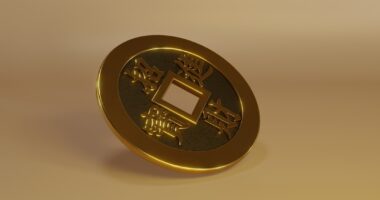The world of non-fungible tokens (NFTs) has burgeoned into a vibrant ecosystem, with a plethora of platforms catering to various niches and audiences. Each platform offers unique features, functionalities, and user experiences, making it essential for potential creators and collectors to understand the distinctions among them. Some platforms, like OpenSea and Rarible, are designed for a broad audience, allowing users to mint, buy, and sell a wide array of digital assets.
Others, such as Foundation and SuperRare, focus on high-quality art and curated collections, often requiring artists to be invited or vetted before they can list their work. This diversity in platforms reflects the multifaceted nature of the NFT market, where different communities and interests converge. Moreover, the choice of platform can significantly influence an artist’s or collector’s experience.
For instance, platforms that emphasize community engagement, such as Nifty Gateway, often host exclusive drops and collaborations with well-known artists, creating a sense of urgency and excitement among users. On the other hand, platforms like Mintable prioritize user-friendliness and accessibility, enabling even those with minimal technical knowledge to create and trade NFTs effortlessly. Understanding these nuances is crucial for anyone looking to navigate the NFT landscape effectively.
By familiarizing themselves with the various platforms available, users can align their goals—whether they are seeking to showcase their art, invest in digital assets, or engage with a specific community—with the right platform that meets their needs.
Key Takeaways
- NFT platforms vary in terms of their features, functionality, and target audience, so it’s important to understand the differences between them before choosing one.
- When evaluating platform fees and costs, consider not only the initial fees but also any ongoing costs such as transaction fees and storage fees.
- Researching platform security and reputation is crucial to ensure the safety of your NFTs and your personal information.
- Consider the user interface and experience of each platform to ensure it aligns with your preferences and technical abilities.
- Exploring the platform community and audience can provide valuable insights into the platform’s potential for exposure and engagement.
- When comparing platform integration and compatibility, consider how well the platform integrates with other tools and platforms you may be using.
- Seek out platforms that offer strong support and a variety of resources to help you navigate the NFT space and troubleshoot any issues that may arise.
Evaluating Platform Fees and Costs
Fees Associated with NFT Marketplaces
When venturing into the realm of NFTs, it’s essential to consider the financial implications associated with different platforms. Each NFT marketplace has its own fee structure, which can significantly impact both creators and collectors. Typically, these fees include gas fees for transactions on blockchain networks like Ethereum, listing fees for putting an NFT up for sale, and commission fees that platforms take from sales.
Variability in Fee Structures
For instance, while some platforms may charge a flat percentage on sales, others might have tiered pricing based on the value of the NFT being sold. This variability necessitates a thorough evaluation of potential costs before committing to a particular platform. Additionally, it is essential to consider how these fees can affect profitability.
Impact on Creators and Collectors
For artists minting their work, high gas fees during peak network congestion can eat into their earnings, making it crucial to choose a platform that offers competitive rates or alternative solutions like layer-2 scaling options. Collectors should also be mindful of the total cost of acquisition when purchasing NFTs, as hidden fees can quickly accumulate.
Researching Platform Security and Reputation

In an era where digital assets are increasingly susceptible to theft and fraud, security is paramount when selecting an NFT platform. Users must prioritize platforms that employ robust security measures to protect their assets and personal information. This includes features such as two-factor authentication (2FA), secure wallet integrations, and transparent policies regarding data protection.
Additionally, researching the platform’s history regarding security breaches or hacks can provide valuable insights into its reliability. A platform with a solid track record of safeguarding user assets is more likely to inspire confidence among creators and collectors alike. Reputation also plays a critical role in determining the trustworthiness of an NFT platform.
Engaging with community forums, reading user reviews, and following industry news can help users gauge how a platform is perceived within the broader NFT ecosystem. Platforms that have garnered positive feedback for their customer service, responsiveness to issues, and overall user experience tend to attract a loyal user base. Conversely, platforms that have faced significant criticism or controversy may pose risks that could jeopardize users’ investments.
By conducting thorough research into both security measures and reputation, individuals can make informed choices that enhance their overall experience in the NFT space.
Considering Platform User Interface and Experience
The user interface (UI) and overall experience of an NFT platform are critical factors that can significantly influence user satisfaction and engagement. A well-designed UI should be intuitive and easy to navigate, allowing users to seamlessly explore listings, create NFTs, and manage their collections without unnecessary complications. Platforms that prioritize user experience often incorporate features such as search filters, customizable dashboards, and clear categorization of assets to enhance usability.
A positive user experience not only fosters greater engagement but also encourages users to return to the platform for future transactions. Furthermore, the aesthetic appeal of a platform cannot be underestimated. A visually pleasing design can create an inviting atmosphere that resonates with users, particularly in a space as creative as NFTs.
Platforms that showcase artwork effectively through high-resolution images and engaging layouts can enhance the perceived value of the assets being traded. Additionally, responsive design is essential for accommodating users across various devices—whether they are accessing the platform via desktop or mobile. By considering both functionality and aesthetics in their evaluation of NFT platforms, users can select environments that not only meet their practical needs but also inspire creativity and enjoyment.
Exploring Platform Community and Audience
The community surrounding an NFT platform can significantly impact an individual’s experience within that ecosystem. Engaging with like-minded individuals who share similar interests in art, collectibles, or gaming can foster collaboration and inspiration among creators and collectors alike. Some platforms cultivate vibrant communities through social media channels, Discord servers, or forums where users can discuss trends, share insights, and promote their work.
A strong community presence not only enhances user engagement but also provides valuable networking opportunities that can lead to collaborations or increased visibility for artists. Moreover, understanding the audience that frequents a particular platform is crucial for creators looking to target specific demographics or niches. For instance, platforms focused on digital art may attract a different audience than those centered around gaming or virtual real estate.
By analyzing the types of users active on various platforms—such as their interests, purchasing behaviors, and engagement levels—creators can tailor their offerings to better resonate with potential buyers. This alignment between creator intent and audience interest can lead to more successful sales and a more fulfilling experience within the NFT space.
Comparing Platform Integration and Compatibility

As the NFT landscape continues to evolve rapidly, integration with other technologies and platforms has become increasingly important for users seeking seamless experiences. Many NFT marketplaces now offer compatibility with various wallets, allowing users to manage their digital assets more efficiently across different platforms. For instance, integration with popular wallets like MetaMask or Coinbase Wallet enables users to easily transfer NFTs between marketplaces without cumbersome processes.
This interoperability not only enhances user convenience but also broadens the potential market for creators by allowing their work to be showcased across multiple platforms. Additionally, compatibility with emerging technologies such as virtual reality (VR) or augmented reality (AR) can provide unique opportunities for creators looking to push the boundaries of their art. Platforms that support VR galleries or AR experiences allow artists to present their work in innovative ways that engage audiences on a deeper level.
As technology continues to advance, users should consider how well a platform integrates with these developments to ensure they remain at the forefront of the evolving NFT landscape. By comparing integration capabilities across different platforms, users can select those that align with their technological preferences and aspirations.
Seeking Platform Support and Resources
Finally, robust support systems and resources are essential components of any successful NFT platform. Users may encounter various challenges—ranging from technical issues during minting to questions about best practices for marketing their work—making access to reliable support crucial for a positive experience. Platforms that offer comprehensive help centers, tutorials, or live chat support demonstrate a commitment to assisting their users in navigating potential hurdles effectively.
This level of support not only enhances user confidence but also fosters a sense of community where individuals feel empowered to explore the possibilities within the NFT space. Moreover, educational resources play a vital role in helping users understand the intricacies of NFTs and blockchain technology. Platforms that provide guides on topics such as wallet setup, gas fee optimization, or marketing strategies equip users with the knowledge needed to succeed in this dynamic environment.
By seeking out platforms that prioritize user support and offer valuable resources for learning and growth, individuals can enhance their overall experience while minimizing frustration as they embark on their NFT journey. In this rapidly evolving landscape, having access to reliable support systems is not just beneficial; it is essential for long-term success in the world of NFTs.
FAQs
What is an NFT?
An NFT, or non-fungible token, is a digital asset that represents ownership or proof of authenticity of a unique item or piece of content, such as artwork, music, videos, or collectibles, using blockchain technology.
What are NFT marketplaces?
NFT marketplaces are online platforms where creators can sell their digital assets as NFTs. These platforms provide a marketplace for buyers and sellers to trade NFTs, often using cryptocurrency as the payment method.
What factors should I consider when choosing a platform to sell my NFTs?
When choosing a platform to sell your NFTs, consider factors such as the platform’s reputation, user base, fees, ease of use, security features, and the types of digital assets it supports.
What are some popular NFT marketplaces?
Some popular NFT marketplaces include OpenSea, Rarible, Foundation, SuperRare, and Nifty Gateway. Each platform has its own unique features and user base, so it’s important to research and compare them before choosing one to sell your NFTs.
How do NFT marketplaces handle copyright and ownership rights?
NFT marketplaces typically have terms of service that outline copyright and ownership rights. It’s important to review these terms before listing your NFTs for sale and to ensure that you have the legal right to sell the digital assets as NFTs.
What are the fees associated with selling NFTs on a marketplace?
NFT marketplaces often charge fees for listing, selling, and transferring NFTs. These fees can vary widely between platforms, so it’s important to understand the fee structure and factor it into your pricing strategy when selling NFTs.





